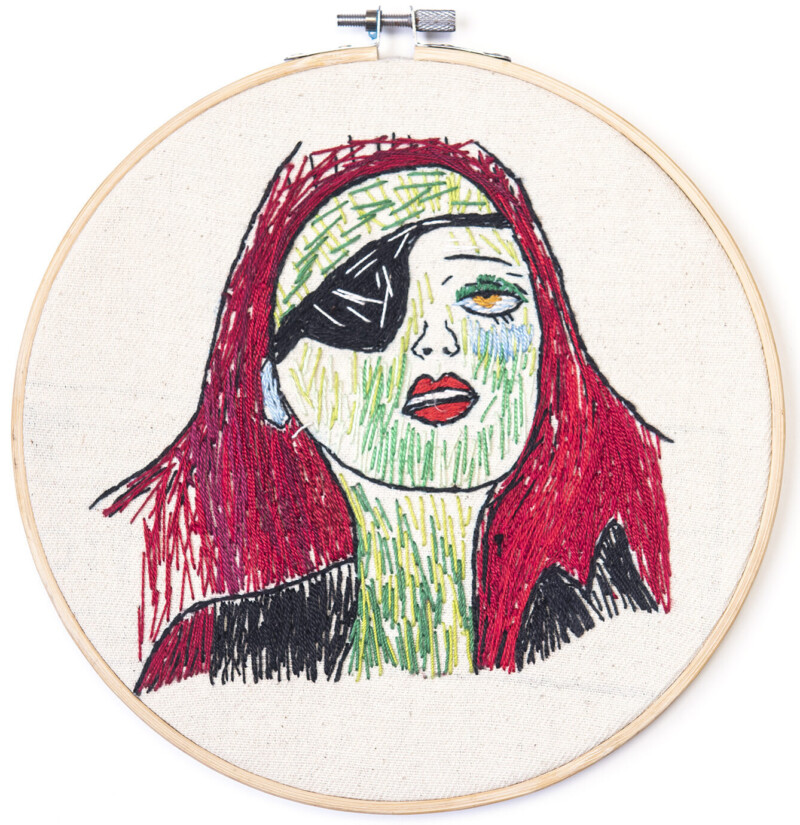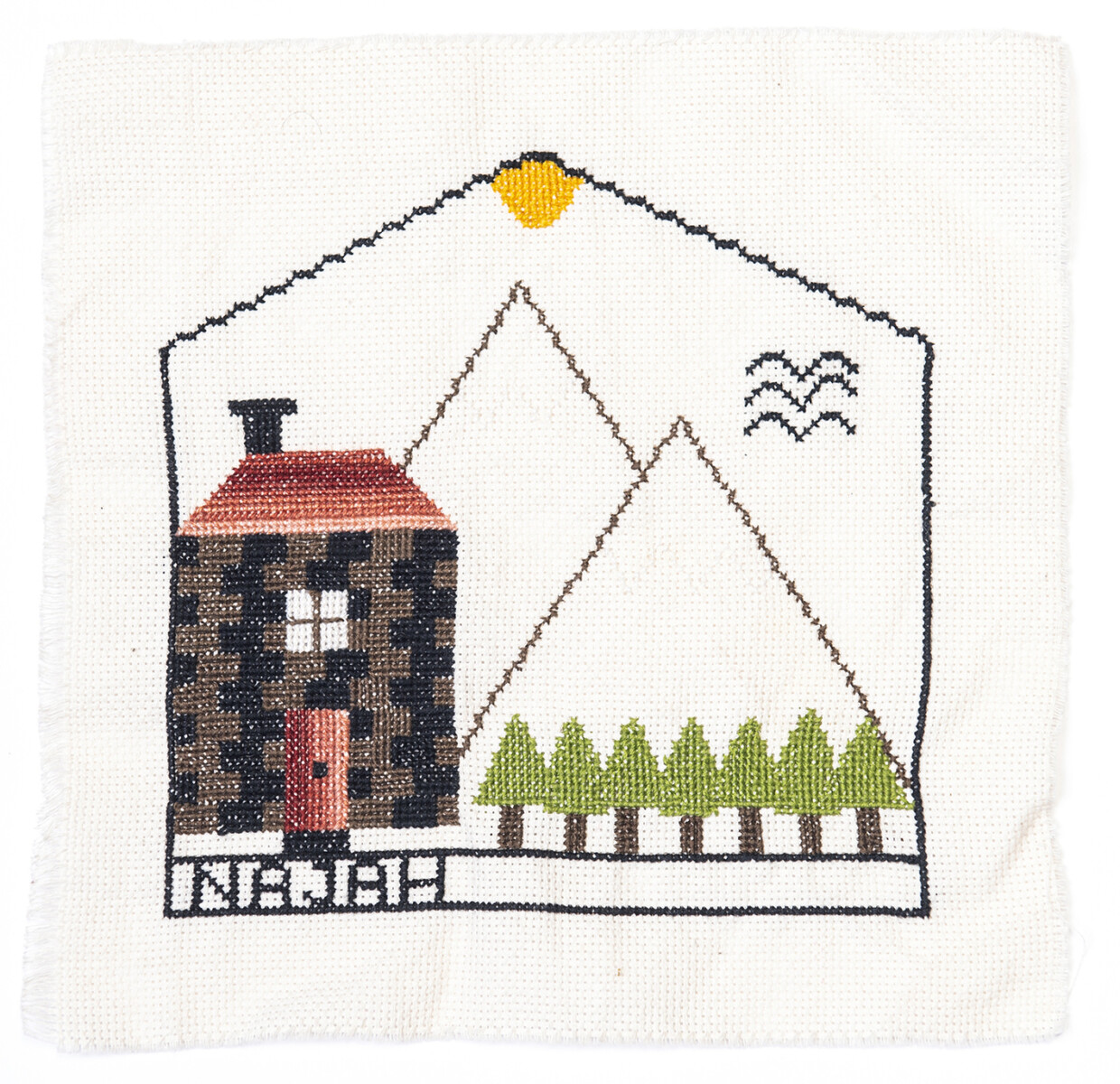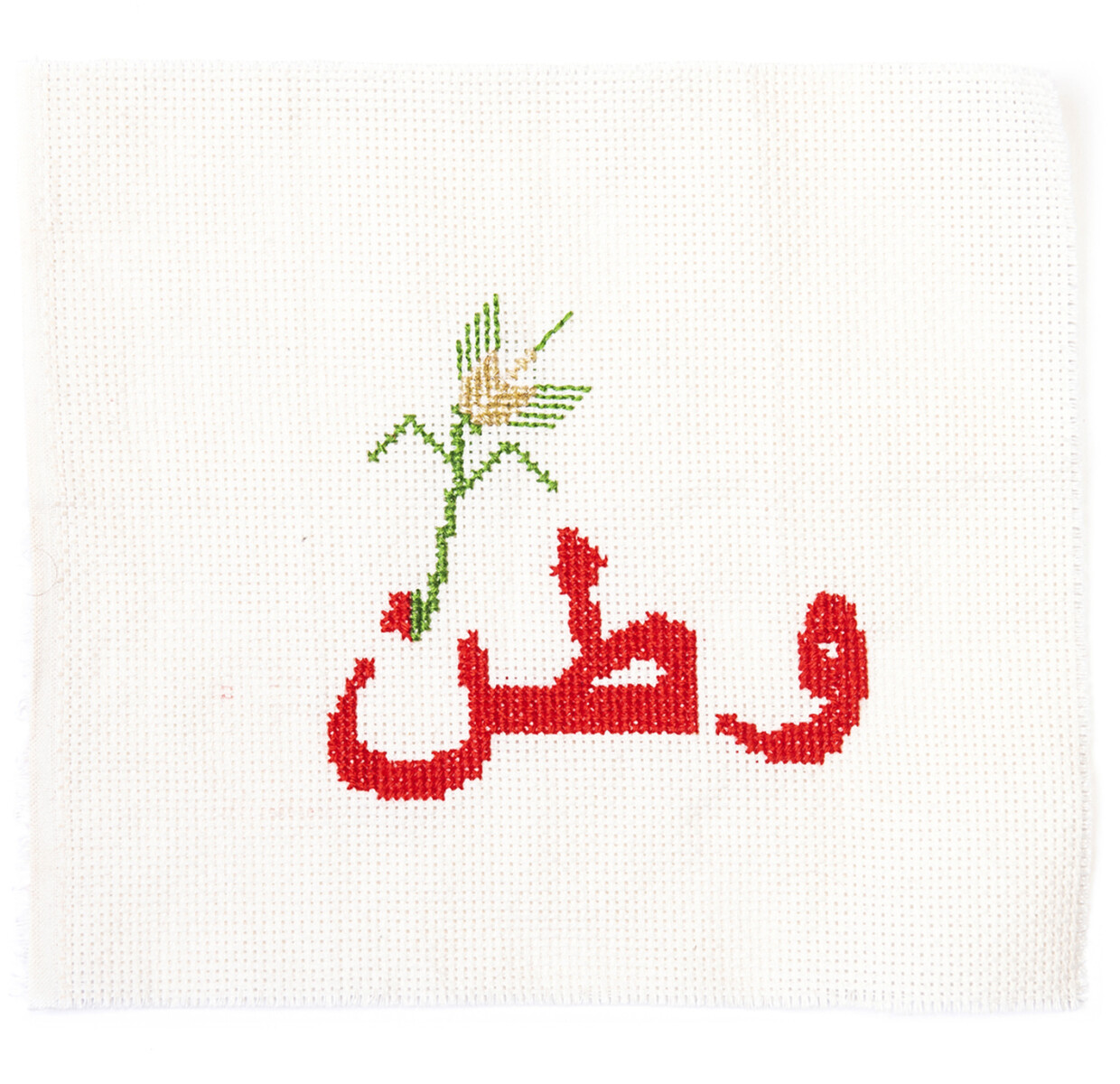Sofie Verclyte
On Migrating Heritage

Traumatische ervaringen worden niet altijd op een verbale manier geuit. Zeker in het geval van conflict en verplaatsing roepen ingrijpende gebeurtenissen vaak op tot andere vormen van expressie. In Shatila, een vluchtelingenkamp ten zuiden van Beiroet, is de taal van borduren al decennia aanwezig onder de Palestijnse bewoners die er sinds de jaren veertig huisvesting vinden. Het is een dagdagelijkse praktijk, geworteld in de rijke traditie in de regio.
Sinds de oorlog in buurland Syrië is er, met de komst van verplaatste Syriërs, een opflakkering van borduurpraktijken in het kamp. Naast een manier om een inkomen te genereren, geven ze persoon-lijke verhalen steek per steek vorm. Geborduurde olijfbomen, rozenstruiken en zelfportretten vertellen bijvoorbeeld over familie, oorlog en verlies, maar ook over hoop en dromen voor de toekomst.
In het onderzoek ‘On migrating heritage’ verdiept Sofie Verclyte zich in deze ontwerppraktijken als canvas om ervaringen in conflict en verplaatsing vorm te geven. Door samen te zitten met de makers en mee te borduren, gaat ze in dialoog met de vrouwen. Door te focussen op aanwezige ontwerppraktijken met naald en draad, krijgen verhalen zichtbaarheid die anders onderbelicht dreigen te blijven.



Imagening my house in Syria
Usually, in real life, you start with building the walls. You start with the walls and end with the door. But for me, like in my dreams, the first thing I will do when I enter my house is open the door. So, I started by embroidering the door before embroidering the walls, the trees, the mountains, the birds, and the sun. My house, back in Syria, had the same colours. It was ruined. My father-in-law has rebuilt it, but other people live there now, not the family.


Watan, my homeland
I started from right to left, like in the Arabic writing. When you reach the end of the line, you go up. Each time when I think of embroidering my story, each time, I think of my homeland. That’s why I wrote ‘watan’, which means homeland.
I wanted to use the colours of the Syrian flag. We have white, red, and black, and there is green. Those were the colours of the official Syrian flag, but now, we have two or three flags. I didn’t know how to do it. I thought about it. Blood is everywhere,
and war is everywhere, so the best thing to do is to add the red color because of the war in Syria.
Did you see that the dot is half red but also half green? The green is wheat, it’s a symbol for hope and a way to tell that good days are coming.
Tekst: Régis Dragonetti.


